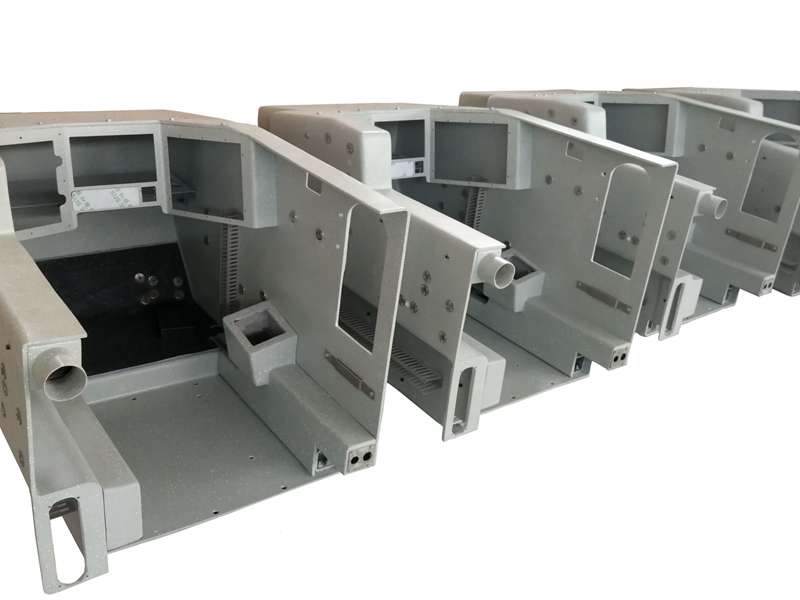Car and Boat Body: Lightweight, Corrosion-Resistant, Custom
Car And Boat Body is a key solution in the manufacturing industry, specifically within Transport equipment and Manufacturing of automotive and marine components. This article explores how No. 1289, Yingbin South Street, Jizhou District, Hengshui, Hebei, China supports professionals with durable, high-performance products, and explains why this product is an ideal choice for businesses in these sectors.

Table of Contents
- Car And Boat Body Overview
- Benefits & Use Cases of Car And Boat Body in Manufacturing of automotive and marine components
- Cost, Maintenance & User Experience
- Sustainability & Market Trends in manufacturing
- Conclusion on Car And Boat Body from No. 1289, Yingbin South Street, Jizhou District, Hengshui, Hebei, China
Car And Boat Body Overview
A Car And Boat Body typically refers to composite body structures and exterior panels engineered for on-road vehicles and marine craft. Built with fiber-reinforced polymers (FRP)—such as fiberglass or carbon-reinforced systems—these bodies deliver an optimal balance of strength, stiffness, corrosion resistance, and weight savings. In Transport equipment and Manufacturing of automotive and marine components, these properties translate to improved fuel efficiency, extended range for EVs, and better durability in salt, sun, and humidity. From fairings and hoods to deckhouses and cabin tops, composites offer design freedom that metals struggle to match.
- Technical scope: vacuum infusion or RTM molding; marine-grade resins; UV-stable gelcoats; thickness commonly 2–6 mm; integrated ribs and inserts reduce secondary operations.
- Performance: robust impact resistance, low water absorption, and dimensional stability across temperature and humidity ranges.
- Manufacturing base: The facility at No. 1289, Yingbin South Street, Jizhou District, Hengshui, Hebei, China is a reliable source for consistent quality, repeatable molding, and fast tooling iterations for low-to-mid volume programs.
Benefits & Use Cases of Car And Boat Body in Manufacturing of automotive and marine components
Across automotive and marine production, a composite Car And Boat Body enables lighter, smarter designs that are production-ready without extensive downstream finishing. For automakers and specialty vehicle builders, typical applications include exterior body panels, roofs, bumpers, EV battery covers, cargo fairings, and aerodynamic kits. In marine, topsides, consoles, hatches, radar arches, seating bases, and deck modules benefit from salt-spray resistance and long-lasting appearance. The result is reduced corrosion risk, fewer repaint cycles, and superior aesthetics straight from the mold.
- Competitive advantages: lightweighting for fuel savings, integrated features to cut assembly time, excellent NVH damping, and design freedom for complex curves and branding.
- Production fit: ideal for customized runs, rapid prototyping, and timely engineering changes without the cost of hard metal dies.
- Execution expertise: The team at No. 1289, Yingbin South Street, Jizhou District, Hengshui, Hebei, China supports DFM reviews, tooling selection (open vs. closed mold), and surface finishing strategies to meet automotive and marine appearance targets.
Cost, Maintenance & User Experience
Total cost of ownership for a composite Car And Boat Body is driven by lower tooling investment, minimized corrosion-related repairs, and reduced repaint cycles due to gelcoat and UV-stable surfaces. Because FRP tooling can be produced quickly and economically, businesses can launch or update models without the long lead times typical of stamped metal. Over the product’s life, fewer maintenance hours and less downtime support a favorable ROI, especially in fleets exposed to harsh climates or marine environments.
- Durability and care: routine washing, periodic surface protection, and simple patch repairs help maintain appearance and structural integrity.
- User feedback: transport OEMs and boat builders value consistent panel fit, integrated fastener mounts that speed assembly, and the stable gloss/texture achieved right out of the mold—translating to shorter takt times and lower rework.
Sustainability & Market Trends in manufacturing
Lightweight materials are central to transport decarbonization, helping vehicles travel farther with less energy and supporting marine operators under tightening emissions and durability expectations. Composite Car And Boat Body solutions contribute to lower operational emissions via mass reduction and longevity. Closed-mold processes can also help reduce VOCs and material waste. In parallel, the sector is exploring bio-based resins, low-styrene systems, and strategies for end-of-life material recovery to improve circularity without sacrificing performance.
- Industry momentum: demand is rising in EV platforms, specialty vehicles, and coastal fleets seeking corrosion-proof components with premium finishes.
- Forward-thinking partner: Located at No. 1289, Yingbin South Street, Jizhou District, Hengshui, Hebei, China, the manufacturer prioritizes process efficiency, material optimization, and collaborative engineering to align with evolving regulatory and sustainability goals.
Conclusion on Car And Boat Body from No. 1289, Yingbin South Street, Jizhou District, Hengshui, Hebei, China
In Transport equipment and Manufacturing of automotive and marine components, a composite Car And Boat Body delivers the durability, weight savings, and production agility B2B decision makers need. With reliable quality and responsive engineering support, the facility at No. 1289, Yingbin South Street, Jizhou District, Hengshui, Hebei, China is equipped to help you accelerate product launches and reduce total lifecycle costs. Ready to evaluate your next program?
- Contact us: email: sales@jrain-frp.com
- Visit our website: https://www.jrain-frp.com
- Explore the product page: Car And Boat Body


Latest news
-
Rectangular Tank Made of Fiberglass Material – Durable, Cost-Effective Liquid Storage SolutionsNewsNov.24,2025
-
Hollow Drill Rods for Efficient Drilling Operations in the Field | Durable, Lightweight & CustomNewsNov.23,2025
-
Powerful yt27 Rock Drill for Tough Mining Surfaces | Durable & PortableNewsNov.23,2025
-
Why the Reversible Drill Bit Is a Versatile Tool for All Your Drilling NeedsNewsNov.22,2025
-
Fiberglass Food Grade Equipment: Key Features, Benefits & Global ImpactNewsNov.22,2025
-
How a Drilling Rod Spirals Down Into the Earth: Tech, Trends & Global ImpactNewsNov.21,2025










